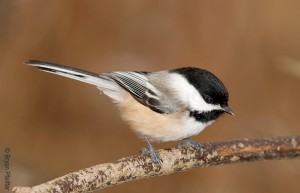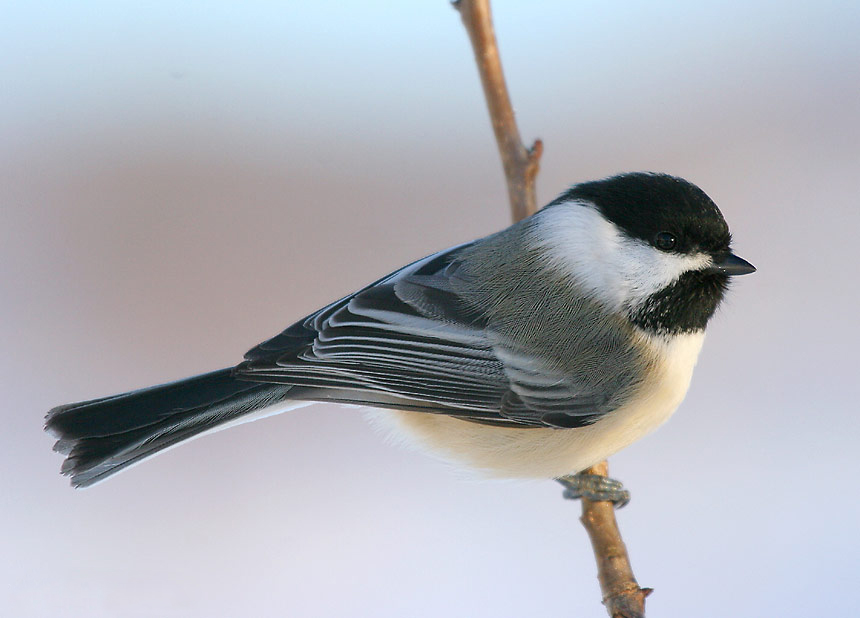Mob Mentality
The Black-capped Chickadee may be the perfect songbird. It is vocal and approachable, inquisitive and dependable. Even the casual birdwatcher finds in the chickadee a neighbor, a friend, an entertainer, a mobster. A mobster? Well, not exactly Al Capone. But if you’re willing to join its mob, the chickadee will make you an offer you can’t refuse.
The Mob, in birder parlance, is a noisy, frenetic assembly of birds ganging up on some common enemy. Chickadees tend to be the kingpins. They begin the assault with an array of call notes. A sharp zeeet comes in response to an approaching predator — a hawk or owl in flight, for example, or a weasel or human walking into the territory. The more familiar chick-a-dee-dee calls are delivered in the presence of a stationary predator. Chickadees vary the rate or urgency of this call or add more dee notes to convey to allies in The Mob the distance or immediacy of the threat.
So a hawk or an owl minding its own business may soon find itself in a maelstrom of chickadees. The Mob swarms and swirls, darts and dives, shouts and scolds in a kind of tactical turf warfare to persuade a predator get lost. Other birds in the woods, when they hear the chickadees going at it, dart in to join the fracas. The Mob is, after all, strength in numbers. It soon includes nuthatches issuing yank-yank calls, Golden-crowned Kinglets delivering short tsee notes and, particularly from southern New England southward, Tufted Titmice and Carolina Wrens repeating raspy scold notes.
Although The Mob is the enemy of the predator, it can be a friend of the birder. A Mob is a songbird magnet, exerting its force on more elusive species deeper in the woods – thrushes, warblers and tanagers, for example – which dart in to investigate the commotion.
 You yourself can actually employ The Mob in the great pursuit of birds. The best way is to form Mob of your own. A birder who repeats a soft, wispy spshsh-spshsh-spshsh is imitating some of those avian scold notes. Spishing, or pishing as we also call it, is universal bird lingo for danger. When you spish, songbirds zoom in to investigate. Chickadees often lead the way.
You yourself can actually employ The Mob in the great pursuit of birds. The best way is to form Mob of your own. A birder who repeats a soft, wispy spshsh-spshsh-spshsh is imitating some of those avian scold notes. Spishing, or pishing as we also call it, is universal bird lingo for danger. When you spish, songbirds zoom in to investigate. Chickadees often lead the way.
But why would a bird approach The Mob? Why not fly away from danger? For one thing, there may be a bit of altruism going on here, synergy in birds of a feather flocking together. But self-preservation also figures in to The Mob. Owls, of course, hunt by stealth. They surprise their prey, closing the deal with a silent, deadly grasp of the talons. A songbird that might otherwise become owl food would do well to know the predator’s location. So many birders add an owl call – the eerie trill of an eastern screech owl works well – to their spishing.
As with any bird-finding, employ moderation. Excessive spishing can become a form of harassment, so don’t overdo it, especially during the spring breeding season. Once the chickadees respond and the commotion rises, lay off the spishing and enjoy the fruits of The Mob mentality.

